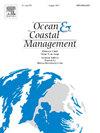Conservation and ecotourism increase natural capital asset value: an economic assessment of sea turtles on Boa Vista Island, Cabo Verde
IF 4.8
2区 环境科学与生态学
Q1 OCEANOGRAPHY
引用次数: 0
Abstract
Sea turtles are of significant ecological, sociocultural, and economic importance to coastal communities globally. After historical population declines, many populations have shown a positive response to conservation efforts, and their status as a flagship species for wildlife watching tourism has facilitated the growth of turtle-based ecotourism. If not sustainably managed, turtle-watching tourism can have negative impacts on wildlife, but with best practice can offer direct benefits to the local economy as well as positive contributions to conservation management. Here, we quantify the Total Economic Value (TEV) of the nesting population of the loggerhead Caretta caretta sea turtle on Boa Vista Island, Cabo Verde, for the first time. The nesting abundance of this population has risen dramatically following the implementation of conservation efforts three decades ago, alongside an expansion of turtle-watching tourism which since 2006 has evolved into a significant component of the tourism sector. Our estimates indicate that the annual TEV of the population has risen dramatically between 2008 and 2019 from approximately €300,000 to almost €2 million, driven by an increase in the non-use and non-consumptive value of the population through conservation investment and ecotourism and a decrease in the consumptive value through poaching. Tourist WTP values indicate the potential for further revenue to be generated to contribute to conservation. Our results can inform future policy decisions and natural capital assessments in Cabo Verde that may support the sustainable expansion of turtle watching as a significant component of the developing tourism sector, providing an alternative income source and economic benefits to local communities and further reducing consumptive use of the population.
保护和生态旅游增加自然资本资产价值:佛得角博阿维斯塔岛海龟的经济评估
海龟对全球沿海社区具有重要的生态、社会文化和经济意义。在历史上数量下降之后,许多种群对保护工作表现出积极的反应,它们作为野生动物观赏旅游的旗舰物种的地位促进了以海龟为基础的生态旅游的发展。如果没有可持续的管理,观龟旅游会对野生动物产生负面影响,但通过最佳实践,可以为当地经济带来直接利益,并为保护管理做出积极贡献。本文首次对佛得角博阿维斯塔岛上的红海龟筑巢种群的总经济价值(TEV)进行了量化。自30年前实施保护措施以来,随着观龟旅游的扩大,这个种群的筑巢数量急剧增加,自2006年以来,观龟旅游已发展成为旅游业的重要组成部分。我们的估计表明,在2008年至2019年期间,由于保护投资和生态旅游增加了人口的非使用和非消费价值,偷猎减少了消费价值,人口的年度TEV从大约30万欧元急剧上升到近200万欧元。旅游WTP的价值显示了为自然保育创造更多收入的潜力。我们的研究结果可以为佛得角未来的政策决策和自然资本评估提供信息,这些决策和评估可能会支持海龟观赏活动的可持续发展,使其成为发展中旅游业的重要组成部分,为当地社区提供另一种收入来源和经济效益,并进一步减少对人口的消耗性使用。
本文章由计算机程序翻译,如有差异,请以英文原文为准。
求助全文
约1分钟内获得全文
求助全文
来源期刊

Ocean & Coastal Management
环境科学-海洋学
CiteScore
8.50
自引率
15.20%
发文量
321
审稿时长
60 days
期刊介绍:
Ocean & Coastal Management is the leading international journal dedicated to the study of all aspects of ocean and coastal management from the global to local levels.
We publish rigorously peer-reviewed manuscripts from all disciplines, and inter-/trans-disciplinary and co-designed research, but all submissions must make clear the relevance to management and/or governance issues relevant to the sustainable development and conservation of oceans and coasts.
Comparative studies (from sub-national to trans-national cases, and other management / policy arenas) are encouraged, as are studies that critically assess current management practices and governance approaches. Submissions involving robust analysis, development of theory, and improvement of management practice are especially welcome.
 求助内容:
求助内容: 应助结果提醒方式:
应助结果提醒方式:


